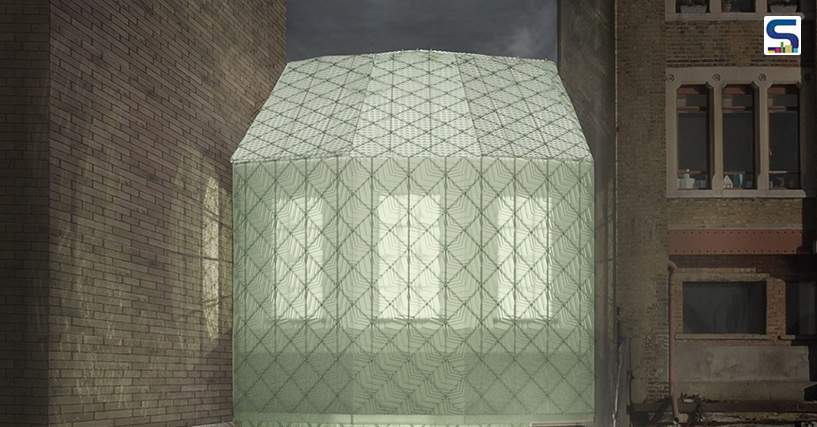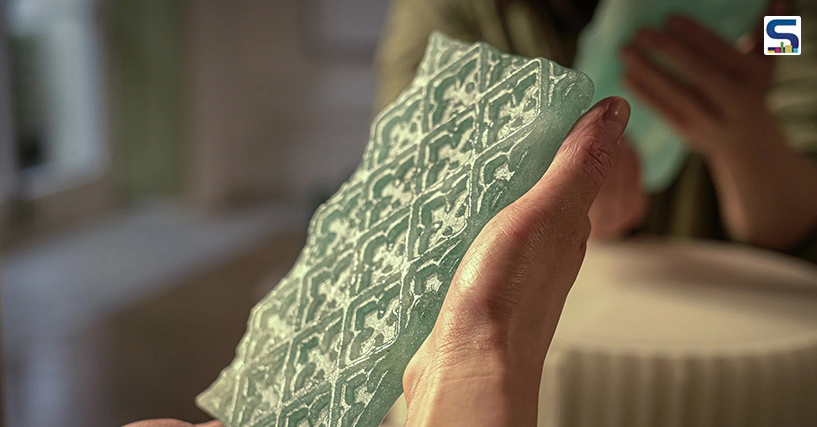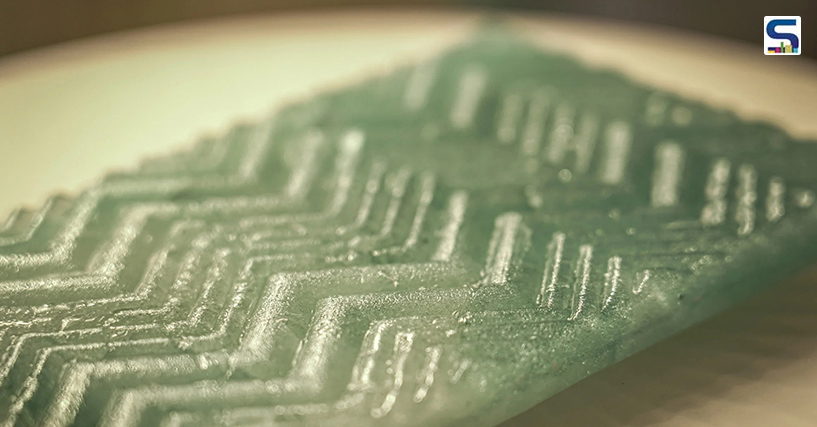
London architecture studio Bureau de Change recently fabricated a range of patterned tiles using Thames Glass. Created by artist Lulu Harrison, who is also a student on the Material Futures masters at Central Saint Martin’s, the Thames Glass is created from mussel shells. A report by SURFACES REPORTER (SR).

Harrison is known to create bio-glass using the ground-up shells of quagga mussels in combination with local sand and waste wood ash. Founders Katerina Dionysopoulou and Billy Mavropoulos of Bureau de Change had earlier worked with Harrison to explore whether this material could be used to create an eco-friendly cladding for buildings. The trio has now created a series of cast glass facade tiles that feature patterns inspired by 19th century terracotta chimney pots. The series had been recently presented in Beautility: How Fusing Beauty and Function Can Change the World exhibition which had been curated by Here Design as a part of London Craft Week. Since the bio-glass tiles are handmade, each of the tiles are unique in colour and finish.

Bureau de Change, which majorly works on the intricate bronze elevator and terrazzo-filled house extensions, decided to incorporate sustainable glass on an architectural scale. For this, Dionysopoulou and Mavropoulos started drawing inspiration from the Royal Doulton which manufactured the city’s water pipes in the mid-19th century and the city's ornamental terracotta chimney pots. The newly produced tile, thus, replicates some of the same intricate 19th century patterns.

The trio believes that Thames Glass has the potential to become a sustainable cladding material in the years to come. Since glass is already sustainable and has the potential of infinitely recycling, Thames Glass aims to offer an even more sustainable alternative to glass as it uses local waste materials.

Quagga mussel shells often end up in landfill in the UK as this non-native species cause blockages in Thames water transfer tunnels, which needs to be removed. Thames Glass, therefore, is a way of giving this natural waste a second life. Harrison’s work led to the creation of blown-glass vessels such as carafes, tumblers, jugs and vases.
Image credits: Dezeen